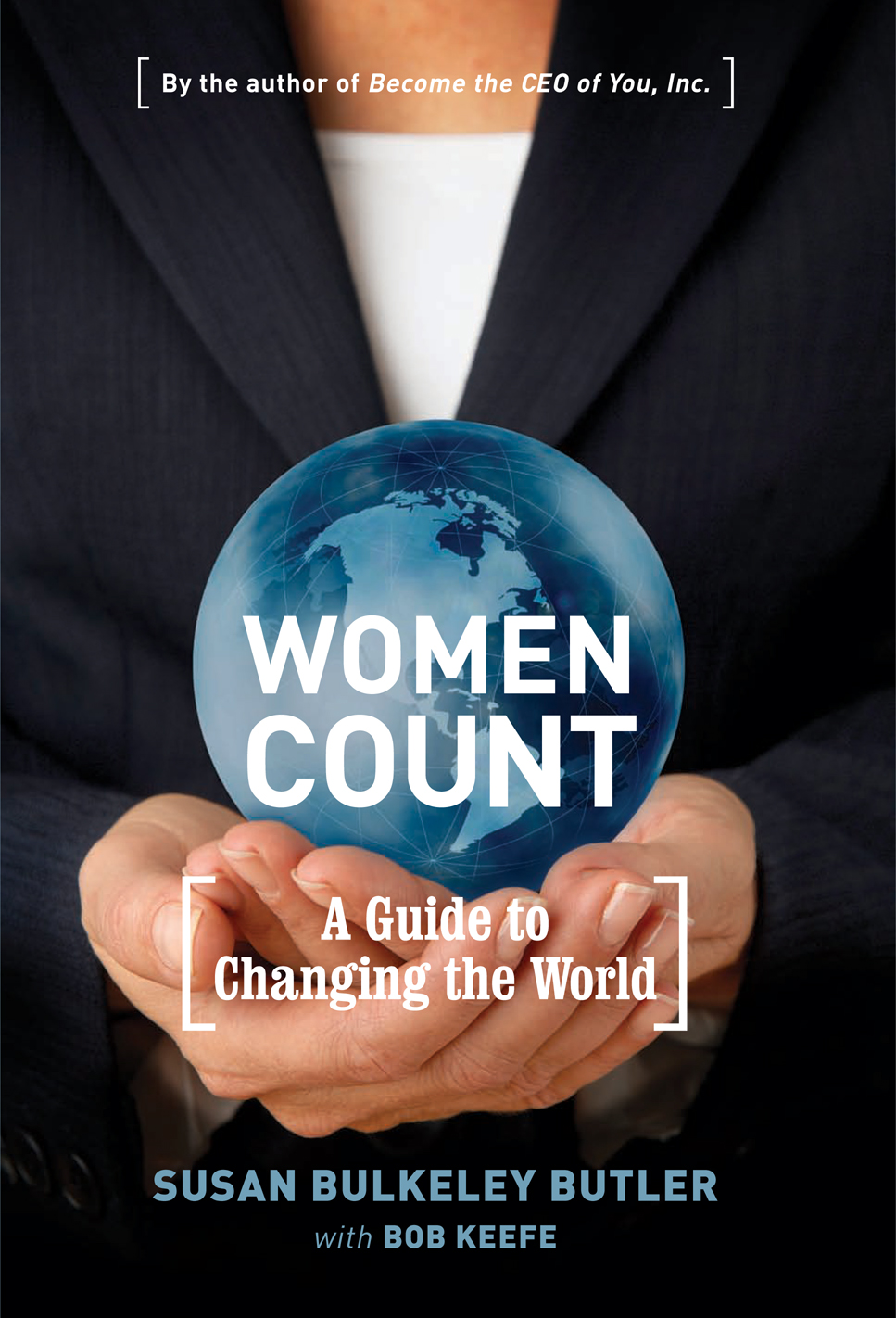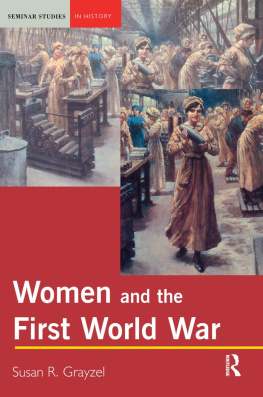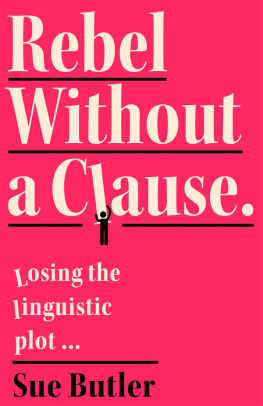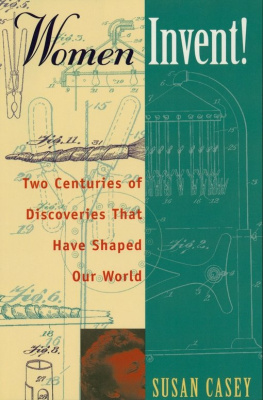Susan Bulkeley Butler - Women Count: A Guide to Changing the World
Here you can read online Susan Bulkeley Butler - Women Count: A Guide to Changing the World full text of the book (entire story) in english for free. Download pdf and epub, get meaning, cover and reviews about this ebook. year: 2010, publisher: Purdue University Press, genre: Home and family. Description of the work, (preface) as well as reviews are available. Best literature library LitArk.com created for fans of good reading and offers a wide selection of genres:
Romance novel
Science fiction
Adventure
Detective
Science
History
Home and family
Prose
Art
Politics
Computer
Non-fiction
Religion
Business
Children
Humor
Choose a favorite category and find really read worthwhile books. Enjoy immersion in the world of imagination, feel the emotions of the characters or learn something new for yourself, make an fascinating discovery.

- Book:Women Count: A Guide to Changing the World
- Author:
- Publisher:Purdue University Press
- Genre:
- Year:2010
- Rating:3 / 5
- Favourites:Add to favourites
- Your mark:
- 60
- 1
- 2
- 3
- 4
- 5
Women Count: A Guide to Changing the World: summary, description and annotation
We offer to read an annotation, description, summary or preface (depends on what the author of the book "Women Count: A Guide to Changing the World" wrote himself). If you haven't found the necessary information about the book — write in the comments, we will try to find it.
Women Count: A Guide to Changing the World — read online for free the complete book (whole text) full work
Below is the text of the book, divided by pages. System saving the place of the last page read, allows you to conveniently read the book "Women Count: A Guide to Changing the World" online for free, without having to search again every time where you left off. Put a bookmark, and you can go to the page where you finished reading at any time.
Font size:
Interval:
Bookmark:


COUNT

SUSAN BULKELEY BUTLER
withBOB KEEFE
Purdue University Press
Copyright 2010 Susan Bulkeley Butler
All rights reserved. No portion of this book may be reproduced, stored in a retrieval system, or transmitted in any form or by any means, mechanical, electronic, photocopying, recording, or otherwise, without written permission from the publisher.
Published by
Purdue University Press
504 West State Street
West Lafayette, Indiana 47907
www.thepress.purdue.edu
Book Design by Anna Christian
Library of Congress Cataloging-in-Publication Data
Butler, Susan Bulkeley.
Women count: a guide to changing the world / by Susan Bulkeley Butler; with Bob Keefe.
p. cm.
ISBN 978-1-55753-569-6
1. WomenPolitical activity. 2. Leadership in women. 3. Social action. 4. Social change. 5. Feminism. I. Keefe, Bob. II. Title.
HQ1236.B88 2010
305.420973'09045dc22
2010007998
Printed in the United States of America
To all who made an impact
on todays women,
and to everyone who will influence
permanente quality
for women around the world.

You must be the change you wish to see in the world.
Mahatma Gandhi
R EGULARLY NOW , I see encouraging reports that the world is changing for the better for women. These are welcome signs along a journey that for me began over forty years ago.
The U.S. Department of Labor reports that women now make up almost 50 percent of the nations workforce.
Fortune magazine states that the number of Fortune 500 women CEOs increased four-fold in the past decade (albeit to a mere fifteen in 2009).
Maria Shrivers A Womans Nation report informs readers that 40 percent of mothers are now their familys primary breadwinner, and 60 percent of mothers bring home at least one-fourth of their familys income.
Time magazine reports that 54 percent of men and 69 percent of women say they believe there would be fewer problems in the world if there were more women in business and government.
For as long as I can remember, the world first ignored, then focused on counting womens accomplishments. Each time a barrier is broken, another marker is posted along the way.
I experienced this firsthand. In 1965, I became the first professional female employee at Arthur Andersen & Co. Fourteen years later, I was the first woman partner at Andersen Consulting, a division of Arthur Andersen & Co. that became Accenture, one of the worlds largest management consulting, technology services, and outsourcing companies.
Make no doubt about it: The accomplishments of women in recent years are truly astounding and well worth celebrating. But tallying numbers is no longer enough. Weve done that. Its no longer enough to count womenits time to ensure that we are all women who count.
Womens history has been one change, one movement, after another. We earned the right to vote. We kept the country running while men fought World War I and World War II. We freed ourselves from our traditional roles. We entered the workplace, and we made our way through the pipeline of every conceivable profession.
Now we need to create change to ensure women are equal partners in making the world a better place for everyone, a place where all women count.
We need another movement.
I am no radical. I realize the word movement may scare some people. But it is necessary. The movement I am advocating now is simply about changing our thinking, putting what we already know about women into action, and making change that is not a temporary Band-Aid, but a permanent solution.
Its not surprising that Time magazine reported in October 2009 that most people think that having more women leaders would help solve the worlds problems. Women, after all, tend to be more compassionate. They tend to take less competitive approaches to issues. And they are typically better listeners and consensus-builders. Yet women represent only a fraction of the worlds leaders.
Numerous studies show that companies run by women significantly outperform their industry peers. Yet women still only make up about 3 percent of the CEOs of Fortune 500 companies.
Women know that to succeed they must depend on support from other women. Yet based on research, women are not actively mentoring, developing, and promoting other women within their organizations.
The timing is right for things to change. Finally, women have the numbers, the education, the track record, and the characteristics necessary to change the world, and the world needs the skills and the attributes of women more than ever.
Now is the time to leverage our numbers and our accomplishments as a collective body, to demonstrate our passion, and to make the world a better placenot just for women, not just for men, but for all.
Its time for you to join the new movement. Lets get going.
New
Math

I VE ALWAYS BEEN about numbers.
At Abingdon High School (Class of 1961) in Abingdon Illinois (population 3,500), math courses such as algebra and calculus were always my favorite subjects. I had little use for courses with lots of reading, but give me a problem, show me an equation, and I could solve just about anything.
When my familys company got its first computer punch card machine to help track orders and sales, I became enamored with its capabilities, even though my official summer job at our American Sanitary Manufacturing Co. (makers and purveyors of bathroom plumbing fixtures and stainless steel swimming pool equipment) was as the telephone operator.
Later, I went to work about ten miles away at the Maurita Dale dress shop in the big city, Galesburg, Illinois (population 37,000). It was a great weekend job, helping Mrs. Manwarren, the shop owner. Like many high school girls, I loved seeing the new fashions and feeling the new fabrics, but what I liked even more was waiting on the customers, making the sales and tallying them up at the end of the day. And, of course, I liked getting the discounts on all of my purchases.
My role model for how to dress was one of my math teachers, Shirley Castle. She always dressed to the hilt: beautiful skirts and sweaters, high heels, and pearls. I am always reminded of her when I talk about the importance of ones packaging. It is all about the image one leaves. The image Mrs. Castle left is very clear to me, even to this day.
I thought about being a mathematician.
Instead, I decided to get a business degree from Purdue University, with a minor in mathematics. It served me well. Fresh from college, I became the first woman professional hired at the Big Eight accounting firm, Arthur Andersen & Co., and would later become the first woman partner of the firms consulting division, now known as Accenture. I eventually rose to the position of Managing Partner of Accentures Office of the CEO before retiring in 2002. Now in my second career as the founder and CEO of the Susan Bulkeley Butler Institute for the Development of Women Leaders, through which I spend much of my time coaching and mentoring women, I find math, numbers, and my experience as a woman in business intersecting once again.
Font size:
Interval:
Bookmark:
Similar books «Women Count: A Guide to Changing the World»
Look at similar books to Women Count: A Guide to Changing the World. We have selected literature similar in name and meaning in the hope of providing readers with more options to find new, interesting, not yet read works.
Discussion, reviews of the book Women Count: A Guide to Changing the World and just readers' own opinions. Leave your comments, write what you think about the work, its meaning or the main characters. Specify what exactly you liked and what you didn't like, and why you think so.




